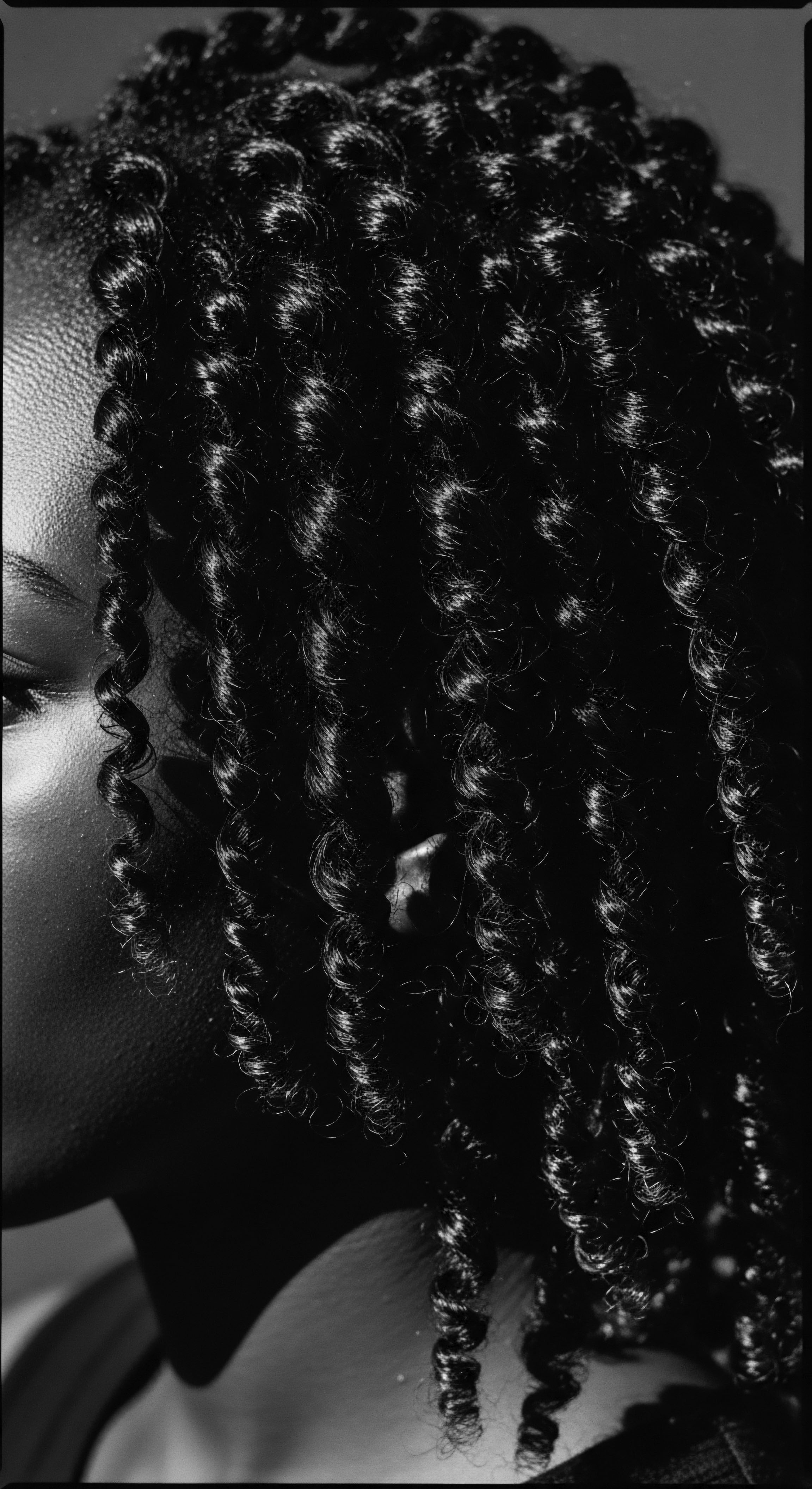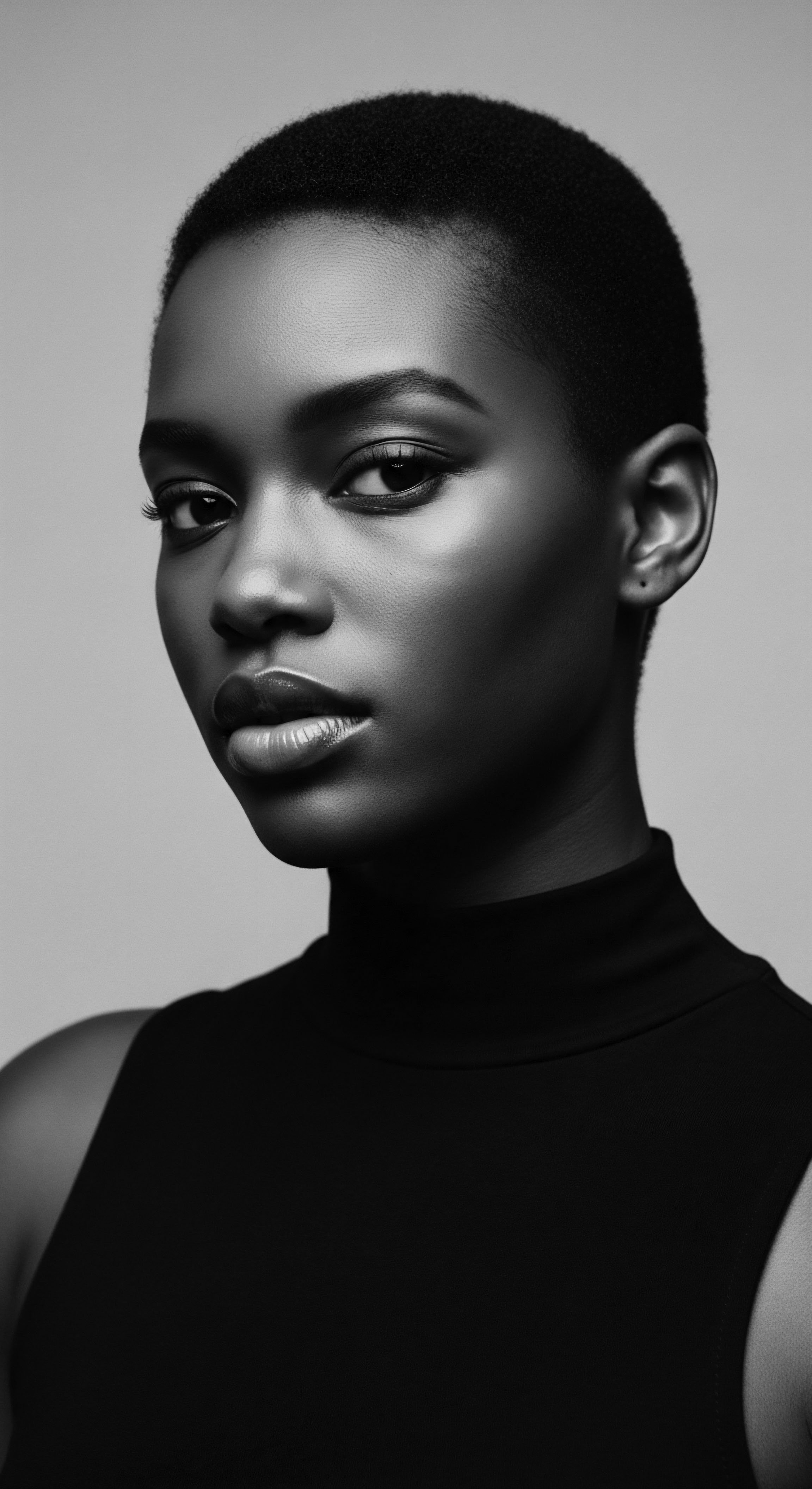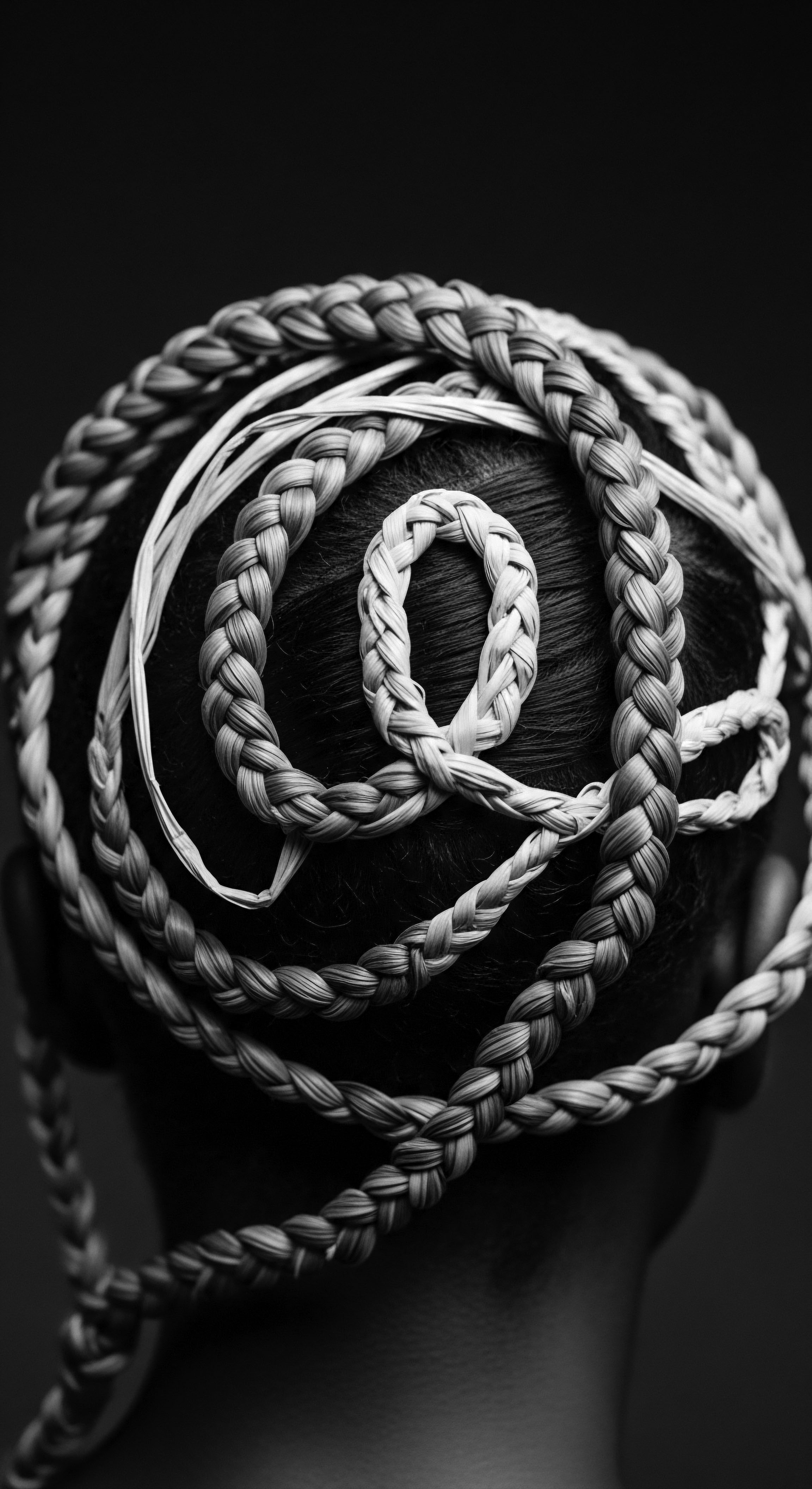
Fundamentals
The Early 20th Century, spanning roughly from 1900 to the 1930s, marks a transformative era in the grand unfolding of human experience. Within Roothea’s living library, its meaning transcends a mere chronological designation; it signifies a period of profound shifts that reshaped societies, particularly impacting the narratives and physical expressions of textured hair heritage. This time witnessed the enduring echoes of ancestral practices meet the burgeoning forces of industrialization and evolving social structures. It was a period when the very definition of beauty began to be mass-marketed, yet simultaneously, Black and mixed-race communities cultivated spaces of resilience and innovation in their hair care.
Understanding this period requires a gentle exploration of its layered contexts. The early decades of the 20th century were a crucible where ancient traditions, carried across oceans and generations, encountered new urban landscapes and societal pressures. The hair, in its myriad forms, became a visible statement, a personal archive, and a canvas upon which the stories of adaptation, aspiration, and resistance were inscribed. The period’s essence, therefore, is not simply a historical fact, but a living testament to the dynamic interplay between heritage and circumstance, especially concerning hair.
The Early 20th Century, within the lineage of textured hair, represents a pivotal crossroads where ancestral wisdom navigated the currents of a rapidly modernizing world.
This era saw the rise of formalized beauty industries, with figures like Madam C.J. Walker and Annie Turnbo Malone creating enterprises specifically for Black women, offering products that often aimed to straighten hair. This development, while sometimes viewed through a lens of assimilation, also provided unprecedented economic opportunities and a sense of collective identity through shared beauty rituals. The period’s delineation involves understanding how hair care moved from solely intimate, familial settings to commercial spaces, altering communal practices and individual expressions of self.
The significance of the Early 20th Century for textured hair heritage is multifaceted. It speaks to the ingenuity of Black women who, despite societal constraints, built economic empires. It also highlights the complex dialogue around beauty standards, where the desire for social acceptance often intertwined with the preservation of cultural practices. This era, therefore, serves as a crucial chapter in the ongoing story of hair as a profound marker of identity and legacy.

Intermediate
Moving beyond a fundamental understanding, the Early 20th Century presents a more intricate tapestry of experiences for textured hair. This epoch, from 1900 to the 1930s, saw the cultural implications of hair care deepen as communities grappled with both external societal pressures and internal discussions regarding appearance. The meaning of hair during this time extended far beyond mere aesthetics; it became a language of social mobility, racial pride, and economic self-determination. The term ‘Early 20th Century’ in this context refers to the dynamic evolution of hair practices, particularly within Black and mixed-race communities, as they navigated a world in flux.
One cannot discuss this period without acknowledging the profound demographic shift known as the Great Migration. As millions of African Americans moved from the rural South to urban centers in the North and West, their daily lives, including hair care routines, underwent significant transformation. In these new environments, access to products and the visibility of diverse beauty standards increased.
The collective journey from agricultural landscapes to bustling cities meant a re-evaluation of personal presentation, often influenced by the desire for better working opportunities and social acceptance. This transition often involved adopting styles perceived as “orderly,” which frequently meant straightened hair.
The rise of the Black beauty industry during this time is a testament to the entrepreneurial spirit of Black women. Figures such as Annie Turnbo Malone and Madam C.J. Walker pioneered comprehensive hair care systems designed specifically for textured hair. Malone, for instance, established the Poro Company in 1900, developing products to address scalp health and hair growth, often without the damaging effects of earlier concoctions.
Her Poro College, established in St. Louis in 1918, was a groundbreaking institution, serving as the first Black-owned cosmetology school in the nation. These ventures not only offered products but also created significant employment opportunities for Black women, providing a pathway to economic independence at a time when other avenues were severely restricted.
The burgeoning Black beauty industry of the Early 20th Century, led by visionary entrepreneurs, carved out vital economic pathways and cultural spaces for Black women.
The proliferation of hot combs and pressing oils, though not invented by these entrepreneurs, was widely popularized and integrated into their hair care systems. These tools, often heated on stoves, offered a means to achieve smoother hair textures, which some saw as a way to assimilate into professional society where straight hair was deemed more “orderly” or “respectable”. This era also saw the emergence of the “good hair” versus “bad hair” dichotomy, where straighter, softer textures were often favored over kinkier, coarser hair, reflecting a complex internal dialogue influenced by prevailing Eurocentric beauty standards. Yet, even within this context, the act of hair styling remained a communal tradition, a moment of bonding and care passed down through generations, often on Sundays, the only day of rest for many Black women.
The cultural impact of these developments extended beyond individual appearance. Black newspapers and magazines of the era began to feature images of Black women, often showcasing lighter skin tones and straightened hair, shaping evolving beauty ideals within the community. However, this was not without internal critique and debate, particularly during periods of heightened Black political activism. The Early 20th Century, therefore, was a period where the interpretation of beauty was actively being contested and redefined, with hair serving as a central point of discussion and self-expression.
Here is a comparison of hair care approaches during the Early 20th Century:
| Aspect of Care Tools |
| Traditional/Ancestral Practices (Pre- & Early 20th C.) Fingers for detangling, homemade combs, forks for straightening, rags for curling. |
| Emerging Commercial Practices (Early 20th C.) Hot combs, pressing irons, wide-toothed combs, early permanent wave machines. |
| Aspect of Care Ingredients |
| Traditional/Ancestral Practices (Pre- & Early 20th C.) Natural oils (e.g. coconut oil, castor oil), herbs, plant-based remedies, animal fats (e.g. lard). |
| Emerging Commercial Practices (Early 20th C.) Petroleum jelly-based pomades, "hair growers" (often containing sulfur), shampoos, conditioners, chemical relaxers (emerging later in the period). |
| Aspect of Care Purpose |
| Traditional/Ancestral Practices (Pre- & Early 20th C.) Protection, cultural symbolism, communication of status, spiritual connection, communal bonding. |
| Emerging Commercial Practices (Early 20th C.) Achieving "orderly" or "respectable" appearance, promoting hair growth, addressing scalp ailments, economic independence for practitioners. |
| Aspect of Care The blend of enduring ancestral knowledge with the innovations of the burgeoning Black beauty industry shaped a distinctive heritage of care during this era. |
The intermediate understanding of the Early 20th Century reveals a dynamic interplay of continuity and change. Ancestral wisdom, while challenged by new environments and beauty standards, found new expressions and economic avenues. The period underscores how hair became a powerful symbol in the quest for self-definition and community building.

Academic
The Early 20th Century, a span roughly from 1900 to the 1930s, constitutes a critical epoch in the sociological, economic, and cultural landscape of textured hair heritage. Its meaning extends beyond a simple historical period; it represents a complex nexus where the biological realities of diverse hair textures intersected with deeply ingrained societal hierarchies, leading to the deliberate construction of a Black beauty economy and the profound articulation of identity. This delineation requires an academic lens, examining the systemic forces and individual agency that shaped hair practices and perceptions during a time of immense social flux.
At its core, the Early 20th Century witnessed the codification of Eurocentric beauty standards as a societal norm, particularly within the burgeoning industrial and professional spheres of the United States. This prevailing aesthetic, often emphasizing straight hair and lighter skin, created a formidable pressure on Black and mixed-race individuals. Yet, from this very pressure arose a remarkable counter-narrative ❉ the establishment of an independent Black beauty industry. This industry, spearheaded by pioneering women, offered not only products but also a sense of community, economic empowerment, and a platform for self-definition, even as it navigated the complexities of assimilation versus affirmation of natural attributes.

The Genesis of a Self-Determined Beauty Economy
The economic impact of Black women entrepreneurs in the Early 20th Century is a compelling case study in resilience and strategic innovation. Faced with exclusion from mainstream beauty markets and limited employment opportunities, Black women recognized and capitalized on the unmet needs of their communities. Annie Turnbo Malone and Madam C.J.
Walker stand as towering figures of this era, their enterprises demonstrating profound business acumen and social consciousness. Malone, with her Poro Company, and Walker, with her eponymous manufacturing company, developed comprehensive hair care systems that addressed the specific needs of textured hair, often neglected by larger corporations.
Consider the remarkable economic reach of Madam C.J. Walker’s enterprise. By the time of her passing in 1919, her company, the Madam C.J. Walker Manufacturing Company, was generating annual revenues in the upper five figures, which, when adjusted for inflation, approximates nearly $10 million in today’s currency.
Her business model, which employed a vast network of commission-based sales agents known as “beauty culturalists,” primarily Black women, provided unprecedented economic opportunities. By 1917, the company reported training nearly 20,000 women as agents, extending its reach across the United States, Central America, and the Caribbean. This organizational structure not only distributed products but also created a self-sustaining economic ecosystem, offering pathways to financial independence for thousands of Black women who were largely relegated to low-wage domestic service work. This is a concrete historical example of how the Early 20th Century became a period of significant economic agency within the textured hair heritage, directly challenging systemic barriers.
The economic ascendance of Black beauty entrepreneurs in the Early 20th Century provided critical financial independence and social infrastructure for Black women, a profound act of self-determination.
The products themselves, often centered around “hair growers” and pressing oils used with heated combs, represented a dual purpose. While they offered methods for straightening hair, often in response to societal pressures for a “neat” or “professional” appearance, they also claimed to promote scalp health and hair vitality. This reflects a complex internal negotiation within the Black community ❉ a desire for respectability and opportunity within a prejudiced society, intertwined with an enduring commitment to hair health. The very act of engaging in these beauty rituals, whether in private homes or burgeoning salons, fostered communal bonds and served as sites for social gathering and information exchange.

The Sociopolitical Dimensions of Hair Identity
The Early 20th Century saw hair become a potent symbol in the ongoing discourse of Black identity. The “politics of hair” during this period was not monolithic; it encompassed a spectrum of perspectives, from those who viewed straightening as a means of assimilation and advancement to those who critiqued it as an abandonment of racial authenticity. The “New Negro” movement of the early 1900s, for instance, aimed to redefine the image of the Black race, with hair presentation playing a significant role in constructing an image of success and respectability.
The widespread adoption of straightened styles by Black women in the 1920s and 1930s, often achieved through hot combs or early chemical relaxers, was a response to a society that often equated straight hair with “good hair” and thus, greater social and economic access. This phenomenon was not simply about individual choice; it was deeply rooted in the systemic discrimination that limited opportunities for those who did not conform to dominant beauty ideals. Noliwe Rooks, a professor of Africana studies, observes that the political symbolism of policing Black hairstyles dates back to the 1800s, intensifying during the Great Migration when increased contact between communities on more equal footing brought hair into sharper focus as a marker of perceived “civilization” or “professionalism”.
This era also laid the groundwork for future hair activism. While the Civil Rights Movement of the 1960s would later champion natural hair as a symbol of Black pride and resistance, the debates and practices of the Early 20th Century were foundational. The critique of straightened hair, which would eventually inspire the Afro, began to take shape even then, indicating a continuous thread of dialogue within Black communities about self-acceptance and racial pride. The cultural significance of hair, therefore, was not static but a constantly evolving reflection of social realities and aspirations.
- The Hot Comb’s Complex Legacy ❉ While associated with straightening, the hot comb’s widespread adoption, championed by entrepreneurs like Walker, allowed for a wider range of styles and was often marketed as part of a system for maintaining hair health.
- Economic Independence for Women ❉ The beauty industry created by Black women provided a rare avenue for financial autonomy, allowing many to move beyond domestic service and build their own livelihoods.
- Debates on Identity ❉ The era sparked ongoing discussions within Black communities about hair as a symbol of assimilation versus a celebration of inherent racial identity.
The academic understanding of the Early 20th Century reveals a profound interplay between systemic oppression and creative resistance. Hair, in this context, becomes a powerful artifact through which to examine economic self-determination, the politics of appearance, and the enduring human quest for dignity and belonging amidst challenging social landscapes. The practices and innovations of this period continue to shape contemporary discussions about textured hair, serving as a vital chapter in its heritage.

Reflection on the Heritage of Early 20th Century
As we gaze upon the Early 20th Century through the lens of Roothea’s living library, we perceive more than just a historical segment; we sense a resonant echo, a deep breath taken at the dawn of a new age, where the spirit of textured hair heritage began to voice its multifaceted story with renewed purpose. This era, while marked by profound societal pressures and the persistent shadows of Eurocentric beauty ideals, also blossomed with an undeniable ingenuity and a fierce determination to self-define. The hot combs and pressing oils, the “hair growers” and burgeoning salons, were not merely tools or products; they were instruments of adaptation, expressions of hope, and conduits for community building.
The legacy of this period, particularly within Black and mixed-race communities, speaks volumes about the inherent strength and adaptability of ancestral wisdom. Even as new methods emerged, the foundational desire for hair health, for communal care, and for the expression of individual and collective identity persisted. The “Soul of a Strand” ethos finds its roots here, in the quiet determination of women who transformed their kitchens into laboratories and their parlors into bustling centers of commerce and connection. It was a time when the tender thread of familial care, passed down through generations, began to intertwine with the robust fabric of organized enterprise, creating a unique heritage of beauty that was both personal and powerfully collective.
This journey from elemental biology, the “Echoes from the Source” of deeply coiled strands, through “The Tender Thread” of evolving care rituals and community spaces, ultimately leads to “The Unbound Helix”—the ongoing liberation of identity. The Early 20th Century reminds us that even amidst challenging circumstances, the spirit of creation and self-preservation can transform limitations into opportunities. It calls upon us to recognize the enduring spirit of those who, with grace and fortitude, laid the groundwork for future generations to celebrate the innate beauty of their textured hair, a celebration that continues to unfold with each passing season. The struggles and triumphs of this era serve as a profound testament to the resilience of hair, not merely as a biological attribute, but as a living chronicle of a people’s journey.

References
- Byrd, A. & Tharps, L. (2001). Hair Story ❉ Untangling the Roots of Black Hair in America. St. Martin’s Press.
- Davenport, K. (2016). Makeshifting. Southern Cultures, 22(3), 82-95.
- Jackson, B. & Rodriguez, A. (2023). What Every Dermatologist Must Know About the History of Black Hair. Cutis, 112(5), E27-E30.
- Koehn, N. F. (2007). Madam C.J. Walker ❉ Entrepreneur, Leader, and Philanthropist. Harvard Business School Case Study .
- Malone, A. T. (1922). Poro Hair and Beauty Culture. Poro College.
- McPherson, D. (2017). Black Women and Beauty Culture in 20th-Century America. Oxford Research Encyclopedia of American History.
- Nielson, C. (2003). Hair Care Practices in African American Women. Cutis, 72(4), 280-282, 285-289.
- Rooks, N. M. (1996). Hair Raising ❉ Beauty, Culture, and African American Women. Rutgers University Press.
- Sylvester, C. (2007). Annie Malone and Poro College ❉ Building an Empire of Beauty in St. Louis, Missouri from 1915 to 1930. University of Missouri-Columbia.
- Walker, S. (2007). Style and Status ❉ Selling Beauty to African American Women, 1920-1975. University Press of Kentucky.
